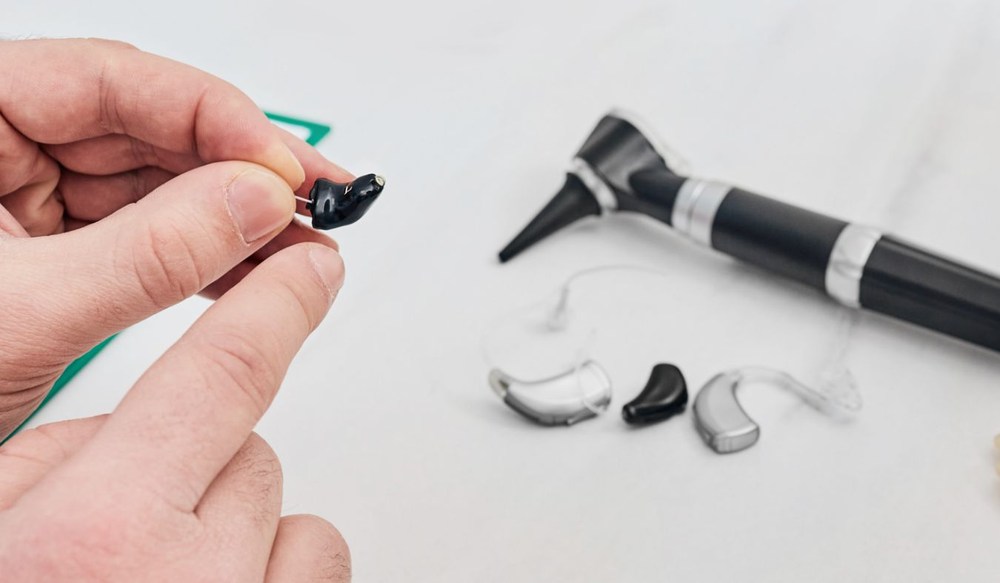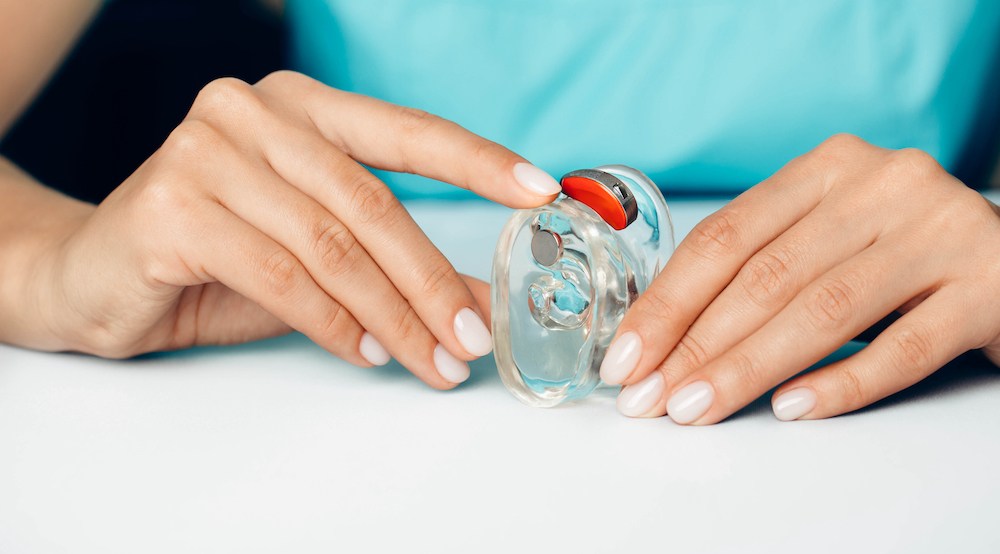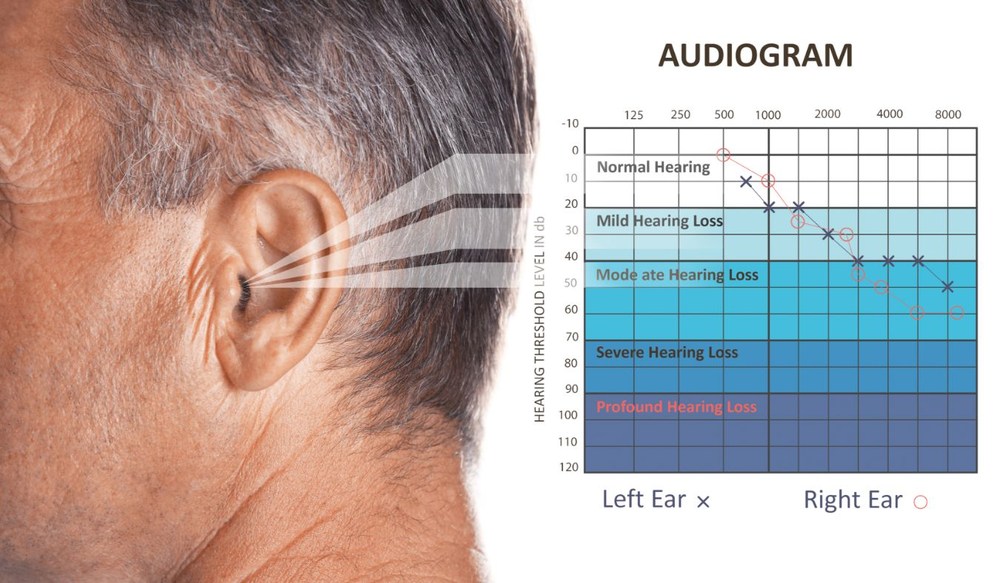The Benefits of Fall Hearing Health Check-Ups
As the seasons shift and temperatures drop, many people start to think

By: admin | July 24, 2024
Living with hearing loss can be challenging, but modern technology like hearing aids has made it much more manageable. In an era where environmental conservation is of utmost importance, it’s essential to think about how these devices impact our planet.
Renewable energy provides a hopeful solution to power hearing aids while reducing their environmental footprint. The blend of green technology and hearing health is not just interesting but crucial for creating a sustainable future for everyone.
Renewable energy’s role in powering hearing aids is a big step towards sustainable healthcare. Making healthcare “green” isn’t just about using recyclable materials or cutting down waste. It covers all areas of care, including the tools and devices used by audiologists.
A large part of this green initiative is incorporating sustainable power sources into hearing aids. This forward-thinking approach combines the benefits of advanced hearing technology with a commitment to environmental responsibility.
Did you know some companies are now making solar-powered rechargeable technology? This amazing innovation could drastically reduce the need for disposable batteries, which can harm the environment if not properly disposed of. It’s an exciting time for both hearing health and sustainability, as we see how these two fields can work together for a better future.
While traditional hearing aids have been revolutionary in improving quality of life, they have an environmental impact that can’t be overlooked. Their production, use and disposal all contribute to environmental damage.
Many traditional hearing aids depend on disposable batteries for power. These batteries not only need frequent replacements but also add to waste when they’re thrown away. The process of making these batteries involves mining and refining raw materials, which significantly increase carbon emissions.
But it doesn’t end there. Once used up, these batteries often end up in landfills where they can leak harmful chemicals into the soil and waterways over time. This cycle repeats with every battery change, creating a significant environmental impact over the lifespan of a traditional hearing aid. It’s clear that while these devices are crucial for many people’s daily lives, there’s potential for improvement in their environmental footprint.
As we dig deeper into the topic of hearing aids and their environmental impact, it’s important to understand renewable energy. This type of energy is a powerful tool in reducing the carbon footprint of hearing aids and creating a more sustainable future.
Renewable energy comes from natural sources that replenish themselves over time, like sunlight, wind and water. Using these resources to power hearing aids can greatly reduce the dependence on disposable batteries. This shift not only decreases waste but also cuts down on harmful emissions from battery production. So, when you choose renewable energy for your hearing devices, you’re making a choice that benefits both your hearing health and our planet!
Looking into clean energy for powering hearing aids opens up a world of possibilities. This approach not only addresses the environmental concerns associated with traditional hearing aid batteries but also paves the way for more sustainable hearing healthcare.
Imagine a future where your hearing aids are powered by the sun, similar to solar panels on a house. Solar-powered hearing aids are no longer a far-off dream but a reality that some companies are actively working towards. By choosing such devices, you’re not only ensuring optimal performance for your hearing health but also contributing to a cleaner and greener planet. It’s indeed an exciting time as we see how clean energy is reshaping the landscape of hearing healthcare, one device at a time.
Solar-powered hearing technology may sound complex, but it’s actually quite simple. Much like a solar-powered calculator, these devices use sunlight to generate power.
Here’s an easy way to understand it: just as plants absorb sunlight for photosynthesis, solar-powered hearing aids absorb sunlight and convert it into usable energy. They do this using tiny solar cells which capture light and transform it into electricity. This electricity is then stored in a rechargeable battery within the device.
This innovative approach to powering hearing aids is not only environmentally friendly but also practical for wearers. Imagine never having to worry about running out of batteries again! With solar-powered hearing aids, you have a reliable power source that recharges itself with natural light – making your life easier while also contributing to a more sustainable planet.
Switching to renewable energy sources in hearing aids has many advantages. This shift not only aligns with global sustainability efforts but also introduces practical benefits for you, the wearer.
Renewable energy, particularly solar power, greatly reduces the need for disposable batteries in hearing aids. This reduces waste and lowers the environmental impact of these devices. For you, it means less frequent battery changes and more consistent device performance.
Additionally, renewable energy-powered hearing aids can lead to long-term cost savings. While the initial investment might be higher than traditional hearing aids, over time you save on the recurring expense of batteries. Plus, you’re actively contributing to a healthier planet – an invaluable benefit that’s worth considering!
The path towards integrating green technology in hearing aids isn’t without obstacles. However, these challenges are not insurmountable. They provide an opportunity for innovation and the chance to build a more sustainable future for hearing healthcare.
Progress is often accompanied by obstacles, but they serve as stepping stones towards improvement. Innovative solutions like solar-powered hearing aids are already making waves, demonstrating that the fusion of renewable energy and hearing technology is not only possible but also beneficial. This exciting intersection promises a brighter and greener tomorrow for everyone relying on these devices. Let’s continue this momentum and look forward to what’s next in sustainable hearing health solutions!
Traditional hearing aids are small electronic devices designed to improve hearing by amplifying sound. They consist of three main parts: a microphone, an amplifier and a speaker. The microphone picks up sound from the environment, which is then converted into electrical signals. These signals are sent to the amplifier, which increases their strength and sends them to the speaker. The speaker then delivers the amplified sound into the ear, allowing the wearer to hear more clearly.
One of the essential aspects of traditional hearing aids is their power source. There are two primary types of power options: disposable batteries and rechargeable batteries.
Many traditional hearing aids use small, single-use batteries, often referred to as button batteries. These batteries are usually made of zinc-air, which means they are activated by exposure to air. A small tab is removed from the battery to allow air to enter, starting the chemical reaction that produces power. Disposable batteries come in various sizes, with each size suited to different hearing aid models. The lifespan of these batteries can range from a few days to a couple of weeks, depending on the hearing aid’s power consumption and usage.
Green hearing aid technology and traditional disposable options each have their distinct advantages and limitations, particularly when it comes to powering various features and overall performance.
Traditional hearing aids that use zinc-air disposable batteries are known for their ability to support high-energy features. These features might include advanced sound processing, Bluetooth connectivity and more sophisticated noise-canceling technologies. Disposable batteries can provide a consistent and reliable power source that meets the high demands of these advanced functionalities. For wearers who prioritize these features, traditional hearing aids with disposable batteries may be necessary to ensure optimal performance without frequent recharging.
On the other hand, green hearing aids, which are powered by rechargeable batteries, offer significant environmental benefits and wearer convenience. By reducing the need for frequent battery replacements, these devices minimize environmental waste and promote a more sustainable lifestyle. Rechargeable hearing aids are also more wearer-friendly, as they eliminate the need to handle small batteries regularly. Wearers can simply place their hearing aids in a charging dock overnight and have a fully powered device ready for the next day.
However, one limitation of green hearing aid technology is that rechargeable batteries may not always provide the same level of power required for some of the higher-energy features found in traditional devices. While advances in rechargeable battery technology continue to improve, there may still be a trade-off in terms of battery life and the ability to support power-intensive functionalities for extended periods. Wearers who rely heavily on features like Bluetooth streaming or advanced noise reduction might find that rechargeable hearing aids require more frequent charging or might not perform as consistently as those powered by disposable batteries.
As we continue to discuss the impact of green technology on hearing health, it’s important to consider how you can incorporate eco-friendly solutions into your own life. It’s not just about selecting a hearing aid that meets your specific needs; it’s also about choosing a device that aligns with your values. If sustainability is important to you, renewable energy-powered hearing aids could be an excellent choice.
Solar-powered hearing aids are a prime example of this intersection between renewable energy and hearing health. They offer the same quality of sound as traditional devices but with the added benefit of being powered by clean, renewable energy. So next time you’re in need of a new device, why not consider going green? Not only will you be taking care of your hearing needs but also contributing to a healthier planet. Remember, every small step counts towards creating a more sustainable future!
As we conclude this enlightening exploration, it’s clear that renewable energy and hearing aids are converging towards a greener future. The benefits of embracing eco-friendly solutions for your hearing needs extend beyond personal convenience or cost savings – they contribute to a larger cause: sustainability.
At Audio Acoustics Hearing Centers, we’re committed to providing you with the latest advancements in hearing health technology while also caring for our planet. If you’re interested in exploring renewable energy-powered hearing aids or simply want more information about sustainable options, we’re here to help.
Tags: benefits of hearing aids, hearing aid repair, hearing aid styles

As the seasons shift and temperatures drop, many people start to think
By: admin | November 18, 2025

Your hearing aids are pretty impressive pieces of technology, but they
By: admin | September 24, 2025

Your ears can tell a surprising story about your overall health. While we
By: admin | May 23, 2025
